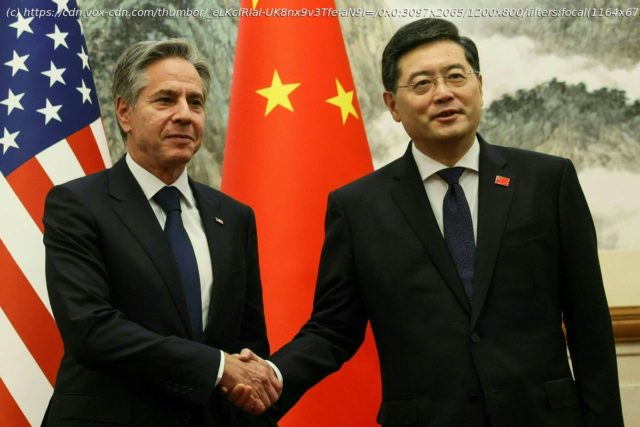The secretary of state’s China trip opens the door for dialogue, but Taiwan is still a major sticking point.
US Secretary of State Antony Blinken is meeting with his Chinese counterpart, Foreign Minister Qin Gang — a positive step after years of escalating tension between the two countries and the first time a US secretary of state has visited China in five years.
Blinken’s visit signifies a desire from both parties to keep diplomatic channels open amid an overall trend of deteriorating relations between the two countries, particularly over trade, Taiwan’s independence, and China’s relationship with Russia over the course of its invasion of Ukraine. Blinken was initially set to visit Beijing in February to meet with Chinese President Xi Jinping, but the presence of a suspected Chinese surveillance balloon over the US dashed those plans — and caused even more rancor between the two nations.
Following the discovery of the balloon, which traversed “sensitive sites” over the US, as the Pentagon put it, the US canceled Blinken’s February trip to China and shot down the balloon off the coast of South Carolina. China responded by claiming the object was primarily for civilian use and calling the US’s operation to take down the object an “excessive reaction.”
Over the past few months, relations between the US and China have been particularly strained, and conversations between high-level officials have been rare. That’s been changing on the civilian side, as Blinken’s visit indicates, but tensions over military issues remain high — and conversations between military leadership nonexistent.
In a phone call between Qin and Blinken Wednesday, the Associated Press reported, Qin insisted that the US should “stop interfering in China’s internal affairs, and stop harming China’s sovereignty, security and development interests in the name of competition,” seemingly referring to Taiwan.
The possibility of open conflict between the US and China over Taiwan’s independence has loomed large over the relationship in recent years, particularly as China builds up its military power — specifically its navy. Earlier this month, according to US Indo-Pacific Command, a Chinese guided-missile destroyer cut off a US naval destroyer, which the US deemed an “unsafe” maneuver during a freedom of navigation operation in the Taiwan strait. That incident is only one of many close calls between US and allied militaries and their Chinese counterparts in the region, raising the specter of conflict due to miscalculation or miscommunication.
Qin and Blinken on Sunday met for more than five-and-a-half hours of discussion, according to the New York Times, though it’s not clear they made any significant progress in addressing either side’s concerns. Each side has sincere motivation to engage in dialogue
Both the US and China are keen to re-establish high-level relationships; on the US side, there’s concern over the possibility of open conflict in the South China Sea between Chinese and US military forces. China, meanwhile, is eager to press its own “core concerns” and avoid US sanctions on its struggling economy.
“An important reason why China is resuming high-level dialogue with the United States is because it fears that Washington would significantly enhance sanctions and export controls against the struggling Chinese economy if the Biden administration saw no hope for bilateral diplomacy,” Neil Thomas, a fellow for Chinese politics at Asia Society Policy Institute’s Center for China Analysis, told Vox via email.






